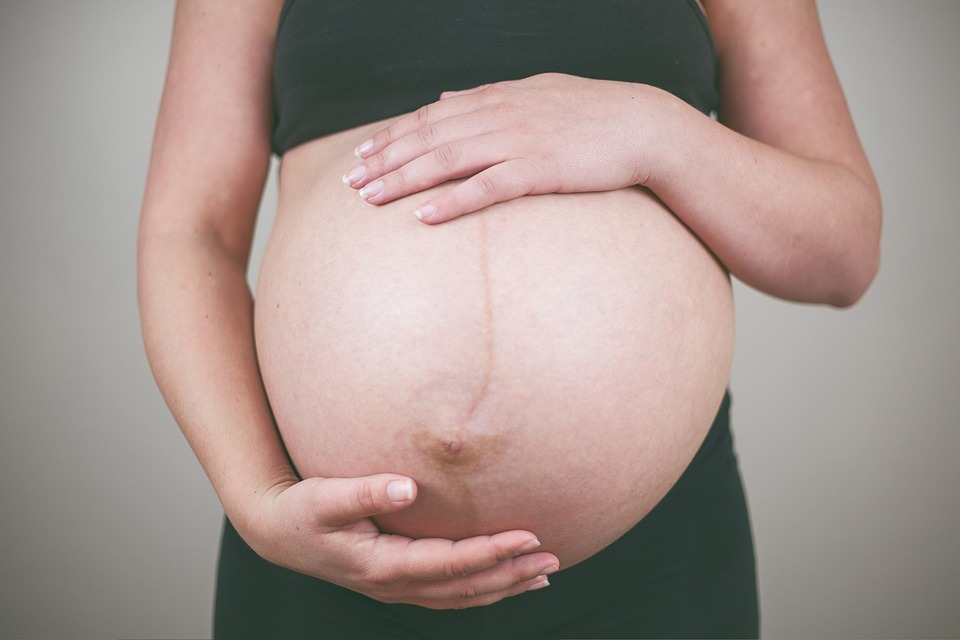Welcome to the home stretch! Reaching the 28th week of your pregnancy marks the beginning of the end, and soon you will finally get to say hello to your infant. At the 39th week, a baby can be considered to have reached full-term gestation, and the due date usually occurs at 40 weeks. Your estimated date of delivery is just an estimate – you could give birth slightly earlier or later than the 40-week period.
Meanwhile, continue reading to discover what you may encounter in the following weeks. Answers have been provided to a selection of the queries that future parents typically ask regarding the third trimester.
When Does the Third Trimester Start & How Long Is It?
The last stretch of pregnancy is defined as lasting from weeks 28 to 40, or about 13 weeks. However, it really concludes with your newborn’s arrival.
When you get to 37 weeks of gestation, your pregnancy is classified as complete. Pregnant women occasionally go into labor prematurely, while some continue to have their babies after 42 weeks. It is important to remember that very few expectant mothers give birth on the date predicted. For the majority of babies, their birth occurs within seven days in either direction of the predicted birthdate.
Delivering prior to 37 weeks is referred to as preterm or premature birth. Once you progress into your third semester of pregnancy, it is essential to be aware of preterm birth symptoms in the event that your baby opts for an earlier arrival.
Your Baby’s Development in the Third Trimester
Your baby is going through a variety of developments within you as it gets ready to come into the world. Here are just some of the fetal development milestones that happen during the third trimester:
28 Weeks: Heart to Heart
Once you reach 28 weeks, the baby’s heart rate will have decreased to around 110 beats per minute, which is significantly slower than its maximum rate of 170 beats per minute during the 9th to 10th week of the pregnancy.
The fetus’s heartbeat is slower than yours. Nonetheless, it still functions quickly. That is because its little heart does not push enough blood with each heartbeat, so it increases the rate of its beats to make up for the lack of blood pumped.
At 28 weeks of the pregnancy, a physician can pick up the unborn baby’s heart sounds using just a stethoscope. Additionally, your husband or wife may be able to hear the heartbeats of the fetus by placing their ear against your abdomen.
It is a challenge even for specialists to spot the accurate location, and it involves a bit of fortune.
30 Weeks: Shedding Hairs
During the second trimester, the fetus had a covering of delicate hair all over its body, which is known as lanugo. The effects of this may begin to decline around 30 weeks of pregnancy.
Do not be astonished if you observe an abundant amount of lanugo on a newborn; it is common for infants to enter the world with sections of hair on their shoulders, ears, and back.
Most newborns still have some of the protective waxy coating known as vernix on their skin at birth, though some of it will start to vanish during the first week. As compared to lanugo, which only a few babies have on them when they are born, vernix is more commonly seen.
34 Weeks: Turning Head-Down
At around thirty-four weeks of pregnancy, the fetus will probably move its head downwards in preparation for the coming birth.
The head of your unborn baby does not necessarily indicate labor is imminent. There is so much that needs to happen in terms of growing and maturing, and usually, the safest and most comfortable location for this process is within the confines of your unborn baby’s secure environment.
It’s important to keep in mind, however, that in some cases, the fetus may not turn in a head-down position until shortly ahead of childbirth and, in exceptionally rare occasions, it might not occur at all.
Your midwife or physician can explain the various possibilities if, when labor starts or close to your due date, the fetus is still positioned with feet or bottom first. In certain instances, your physician could suggest manually attempting to rotate the unborn baby or may suggest a C-section if necessary.
36 Weeks: Baby Fat
As your unborn infant develops a layer of fat beneath the skin, providing insulation and protection, it is beginning to look much more like the baby you will welcome into the world when it is born.
At roughly 36 weeks, your unborn baby will have grown enough that there won’t be much room in your abdomen for the last short period of your pregnancy.
Even though you will still sense your baby moving, let your obstetrician or midwife recognize if you observe any general minimum in your little one’s movements.
There are a variety of components that can influence the weight of a newborn baby, such as heredity and the length of the pregnancy. Yet, most infants tend to be between 3 and 4 kilograms when they enter the world.
During the last three months of pregnancy, healthcare providers will watch the baby’s progress with regular appointments. They will take measurements of the abdomen to calculate its size and the size of the uterus.
37 Weeks: Full-Term Baby
At 37 weeks of pregnancy, it is considered full-term.
Your infant will no longer be regarded as preterm if you deliver at any given point in time. It’s entirely possible that the baby will keep growing and maturing in your uterus for additional weeks prior to giving birth.
By the end of this week, the lungs of the fetus will be fully formed and prepared to begin breathing, and the digestive system will be functional and ready to accept nourishment if the baby were to enter the world at this point.
Common Third-Trimester Symptoms
There is no single pregnancy that is exactly the same as another; however, during the third trimester, there are certain bodily changes that are common. During this three-month period, your infant will expand significantly; they will increase their weight three or even fourfold. Given the alterations in hormones happening while pregnant, it is not out of the ordinary to find that indications you experienced in past stages of pregnancy stay and become more severe.
Aches and Pains
During gestation, the relaxin hormone supports the preparation for delivery by relaxing your pelvic ligaments, gradually softening and widening your cervix. During delivery, this can make labor more challenging as your body must exert additional effort to sustain your little one’s increasing weight. This can cause more disquiet, mainly in your back, hip area, and lower limbs.
Sleeping Problems
The primary trimester can bring about pregnancy weariness due to the hormonal modifications of the body, in addition to the development of the placenta and fetus. Tiredness is frequently seen in the last three months of pregnancy. However, it may occur due to the lack of restful and pleasant sleep. A plethora of issues may be rousing you throughout the night, including bodily discomfort, needing to visit the lavatory regularly, and acid reflux.
Heartburn
The hormones that help you to relax can also make it simpler for stomach acid to cause heartburn as they make the valve in your stomach relax as well. As your infant continues to develop and places more pressure on your abdomen, it is likely this will happen more often.
To alleviate heartburn, try not to consume food that is fatty, spicy, citrusy, caffeinated, or carbonated, and try eating smaller, more frequent meals. Besides taking oral antacids, if you still feel discomfort, speak to your healthcare practitioner. A doctor may prescribe a medication intended to reduce heartburn which is secure to take while pregnant.
Braxton Hicks Contractions
Braxton Hicks contractions are false labor contractions. Pregnant women can experience Braxton Hicks contractions all the way through gestation, although more frequent and stronger ones typically appear during the last three months of pregnancy. It is possible that these contractions can go unnoticed or be powerful enough to be mistaken for the contractions which signal labor.
Braxton Hicks contractions typically have inconsistent timing and remain stable in intensity. Headaches can dissipate gradually, especially when one shifts their body stance or consumes water. This does not compare to labor contractions which strengthen and end up occurring more often as they intensify.
If you have doubts about your emotions or have contractions along with indications of beginning childbirth, call your healthcare provider and be ready to go to the hospital if deemed necessary.
Frequent Urination or Incontinence
As your infant grows, your bladder will feel increasing pressure due to its size. During the last three months of pregnancy, you might notice that you are needing to go to the restroom more frequently. The extra tension might result in urine escaping when you carry out activities such as giggling, coughing, bending down, or picking something up. This is a type of pelvic floor disorder known as stress urinary incontinence. The symptom may be present in some women after giving birth, but it can usually be addressed by strengthening the pelvic floor muscles.
Swelling
During pregnancy, there is a significant enlargement in the amount of blood in the body, which is necessary for the baby’s growth and also modifies the ways in which it holds fluids. It is usual for a slight puffiness to occur in any or all of your hands, countenance, legs, ankles, and feet as you near giving birth.
One may experience greater puffiness after extended amounts of time spent on one’s feet, engaging in physical activities, or being in heated locations (such as when outside on a hot summer day). If you detect sudden bloating of hands or face, make sure to reach out to your health practitioner as it can be a symptom of preeclampsia, a pregnancy complication related to increased blood pressure that can affect your organs if neglected.
Skin Changes
As your skin increases in size, stretch marks may be visible on your bust, abdomen, and legs. This may come with itchiness. Your skin color may become more vivid, resulting in blotches and patches throughout your body.
Varicose Veins
It is typical for varicose (enlarged) veins to appear due to an increase in blood flow and the pressure the baby puts on the veins in the lower abdominal region. Varicose veins can manifest in a bluish or purplish hue and look distorted with a raised profile above the surface of the skin nearby. The highest frequency of them appears on the legs, genitals, and backside; you may sense uncomfortable feelings, soreness, or an urge to scratch. In the majority of cases, the issues caused by giving birth will disappear within a couple of months.
What Fetal Development Occurs in the Third Trimester?
In the last three months of pregnancy, there is a substantial amount of development for your unborn child. In the next few weeks, their bodies will gain weight, organs will fully develop, bones will become solid, and fingernails, toenails, and hair will start sprouting. They’ll also continue to practice taking breaths and grasping.
How Much Should the Baby Move in the Third Trimester?
As your child gets bigger, they’ll have less room to shift and wriggle, yet you will still observe their movements – your little one could be particularly lively right after they eat and during the night. If you notice your baby is less active than normal, consider counting their movements. Generally, about 10 actions in an hour are normal.
Don’t be concerned if you don’t perceive your infant to be active; it is conceivable that they are asleep. Attempt to consume a beverage or snack, then keep track of the time for an additional hour. If you haven’t felt your baby move 10 times for a two-hour period, or if you detect a drastic alteration in movements, contact your healthcare provider without delay.
What’s in Store for You This Trimester
More frequent antenatal appointments. Doctor’s check-ups during pregnancy ordinarily take place at 28, 31, and 34 weeks. Starting at 36 weeks, it is likely you will have an appointment every two weeks, and if you have not delivered by 40 weeks, it is anticipated that you will get one appointment every seven days thereafter.
Having check-ups and tests. Your physician will inform you of the particular exams and examinations that could be necessary during the last three months of your pregnancy. For instance, your physician is probably going to give you a Group B streptococcal diagnosis, a common assessment that determines whether you have the GBS germs. If the examination yields a positive result, your doctor is able to provide the necessary treatment plan.
Tracking fetal movement. If your physician requests you to monitor your unborn baby’s motions, obey their recommendations on how to calculate your little one’s movements. This chart can make keeping count of your baby’s kicks simpler. Your doctor can also tell you when to reach out if you sense something unusual about the movements of your unborn baby.
Upping your calories. The famous phrase should not be taken literally; there is no need to double your food intake even if you are expecting twins. Specialists suggest only increasing your caloric consumption during the final three months of pregnancy and no more than an extra 200 calories per day, which is equivalent to two pieces of whole wheat toast with a little spread.
Watching for signs of labor. It’s possible for you to begin giving birth any time, but it’s most likely to occur between the 39th and 41st week of pregnancy unless you are carrying twins, as multiple births usually happen a little before. It is beneficial to stay knowledgeable and watch for any indications of labor approaching during your third trimester. Besides regular contractions becoming increasingly more frequent and intense, other signs of early labor include amniotic fluid breaking or a ‘show’; where the mucous plug sealing the entrance to the uterus is expelled as a pink or blood-stained jelly-like material.







